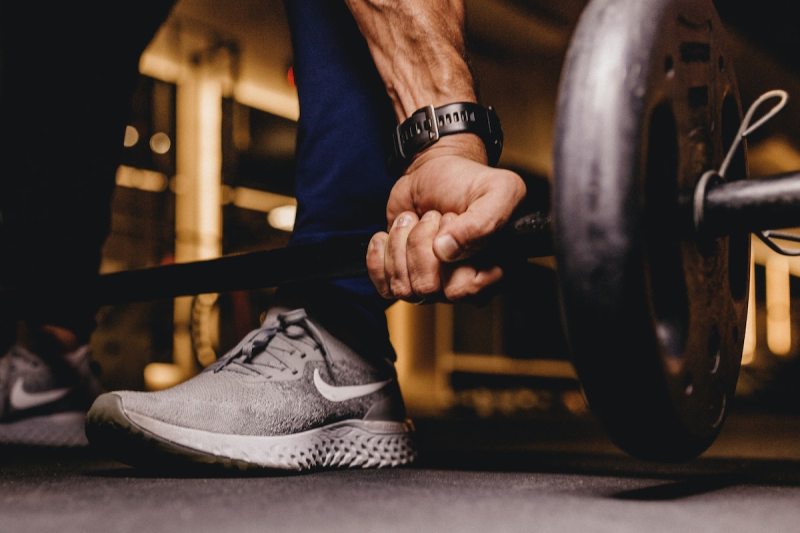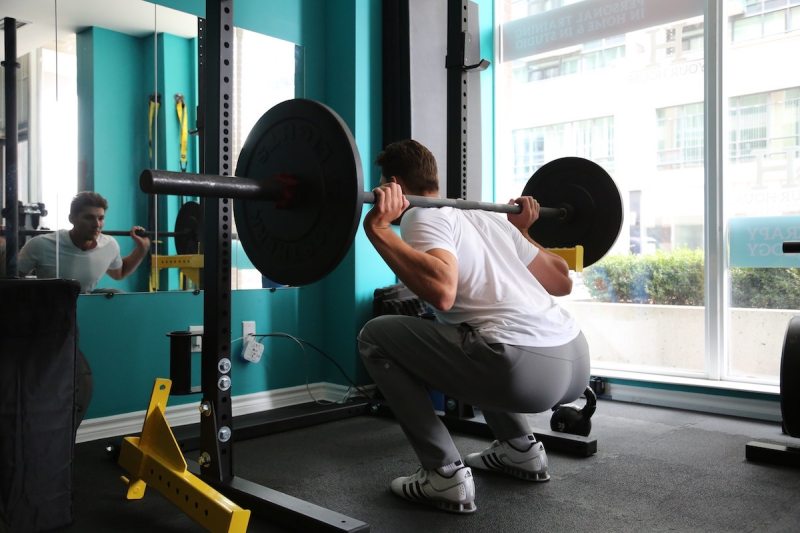The deadlift is one of the most popular strength training exercises. Fitness trainers and enthusiasts swear by it so much that it is now considered necessary for muscle and strength gain.
Have you been told that deadlifts are essential, but you do not like the exercise and are looking for a deadlift alternative? We’ve laid out this guide with you in mind. Continue reading to learn all the exercises you can replace deadlifts with.
What is a deadlift?

A deadlift is a resistance training exercise that involves pulling weights from the ground to a standing position by bending the hips and knees while keeping the back straight. Deadlifts train the lower back, glutes, hamstrings, and core.
Why would someone avoid deadlifts?

There are a few reasons why people avoid deadlifts. Here are some of them:
Deadlifts are fairly technical
Pulling a heavy barbell from the ground to a standing position while keeping your back straight is not a walk in the park. It requires attention to detail and great technique. To complicate things further, bad form on deadlifts could easily lead to pain and injury, particularly in the lower back.
Deadlifts are quite fatiguing
Deadlifts usually involve heavy weights and a lot of mental fortitude. The exercise is known to cause a fair amount of systemic fatigue, which impedes one’s ability to perform other exercises properly.
Other exercises may target specific muscle groups better
The fact that deadlifts are fatiguing is exacerbated by the fact that they do not target any specific muscle group. Typically, deadlifts train the hamstrings, glutes, back, and traps simultaneously, as they are a compound exercise. However, some people may prefer exercises that isolate these muscle groups to see better results.
Looking at all these factors, it is easy to see why some people would seek deadlift alternatives.
7 deadlift alternatives to try
Hip thrusts

Instructions:
- Sit on the floor with your upper back resting on a bench.
- Place your feet on the ground, knees bent.
- Position a barbell or weight over your hips for resistance.
- Bring your hips up toward the ceiling so your knees are at a 90-degree angle.
- Pause here for a moment before lowering your hips back down to the starting position.
Recommended sets and reps: 3 sets of 8 to 12 reps
Barbell back squats

Instructions:
- Position the barbell on a squat rack at chest height. Step under it and rest it on your upper traps.
- Grip the bar with your hands just wider than shoulder-width apart.
- Stand up to lift the barbell off the rack and take a step or two back.
- Stand with your feet shoulder-width apart and toes slightly pointed out.
- Bend your knees and lower your body, keeping your chest up and back straight.
- Lower until your thighs are parallel to the ground or as low as you can possibly go.
- Push through your heels and straighten your legs to return to the starting position.
Recommended sets and reps: 3 sets of 10 to 12 reps
Barbell rows

Instructions:
- Stand with your feet shoulder-width apart and evenly grip a barbell.
- Hinge at your hips and bend forward, keeping your back straight. Your arms should be fully extended.
- Bend your elbows to pull the barbell toward your abdomen, keeping your elbows tucked into your sides.
- Slowly lower the weight back down to the starting position.
Recommended sets and reps: 4 sets of 10 to 12 reps
Rack pulls

Instructions:
- Position the barbell on a rack or blocks at knee height.
- Stand with your feet hip-width apart and grip the barbell with hands just wider than shoulder-width.
- Stand up straight, lifting the barbell by straightening your legs and back.
- Pull the barbell up until your hips are fully extended and your shoulders are back.
- Lower the barbell back to the rack or blocks before repeating.
Recommended sets and reps: 3 sets of 6 to 10 reps
Farmer’s carry

Instructions:
- Grab a heavy dumbbell or kettlebell in each hand.
- Stand with your feet shoulder-width apart and keep your back straight.
- Start walking forward while holding the weights by your sides.
- Keep your shoulders back and core engaged.
- Continue walking for the desired distance or time.
- Carefully place the weights back down before your next set.
Recommended sets and reps: 4 sets of walking 50 yards or for 40 seconds
Cable pullthroughs

Instructions:
- Adjust the cable machine to the lowest setting and attach a rope handle.
- Stand facing away from the machine, feet shoulder-width apart. Grip the rope handle with both hands in between your legs.
- Take a step or two away to create tension in the cable.
- Hinge at your hips, keeping your back straight, and let the rope pull between your legs.
- Drive your hips forward, pulling the rope up and squeezing your glutes at the top.
- Slowly hinge back to the starting position.
Recommended sets and reps: 4 sets of 8 to 12 reps
Good mornings

Instructions:
- Place a barbell on your upper back as if you’re doing a squat.
- Stand with feet shoulder-width apart and grip the barbell with both hands.
- Keeping your back straight and only a slight bend in your knees, hinge at your hips, and lower your torso forward.
- Go down until your torso is nearly parallel to the ground or as low as you can comfortably go.
- Drive your hips forward to lift your torso back up.
Recommended sets and reps: 3 sets of 10 to 12 reps
How to incorporate these alternatives into your routine

Incorporating deadlift alternatives into your routine will depend on your reason for replacing deadlifts in the first place. If you decide to replace deadlifts with exercises like good mornings, barbell squats, and hip thrusts because they target the legs more specifically, adding them to your leg day routine will make sense.
Also, if you replace deadlifts with exercises like barbell rows and rack pulls because they target the back muscles more specifically, perform them whenever you train your back. A simple pull-day workout could also be the perfect time for deadlift alternatives.
As you incorporate these deadlift replacements into your training routine, remember not to perform too many sets in one training session. Better yet, spread out your volume (number of sets) over two or more training sessions. This increases exercise frequency, which research has shown to be beneficial for muscle growth.
Frequently asked questions

Which exercise is better than deadlift?
No single exercise is “better” than the deadlift, as the best choice depends on individual goals, physical limitations, and physical preferences. However, if your goal is to grow muscle, it might be better to choose exercises that specifically target each of the many muscle groups involved in deadlifts.
Are deadlifts necessary?
There is no must-do exercise, and deadlifts are no exception. While deadlifts are great for full-body strength development and improving athletic performance, you don’t absolutely need them in your workout routine. There are many effective alternatives, including good mornings, stiff-leg deadlifts, rack pulls, and barbell squats.
Can you build a strong back without deadlifts?
While the deadlift can make your back stronger, there are many other exercises that can help you build a thick, strong back. Lat pulldowns, cable rows, t-bar rows, barbell and dumbbell rows, pull-ups and chin-ups, hyperextensions, and dumbbell pullovers are only some of the many exercises that can help you build a strong back.




